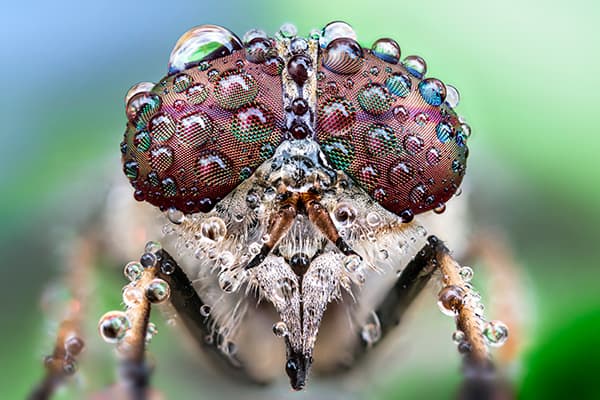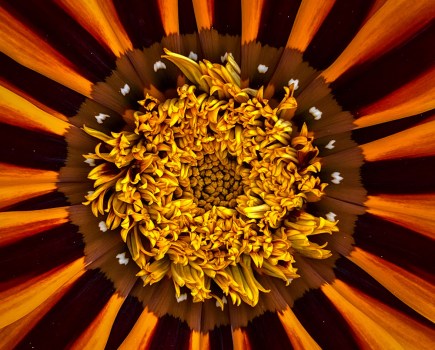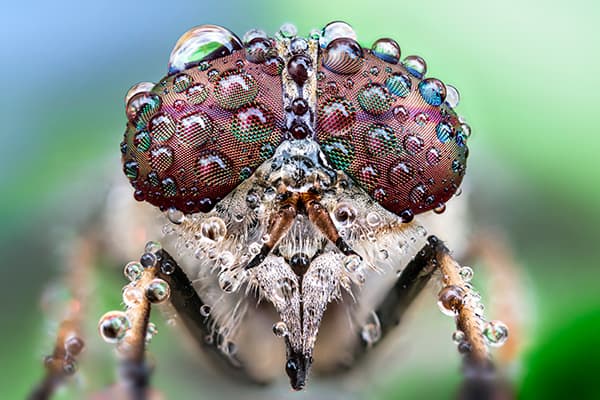
Alberto’s aim is to show beauty in the smallest details
Getting close to nature is something most photographers of the natural world would regard as fundamental. After all, they want to capture a place full of wonder and beauty, and to do this properly they must immerse themselves within it.
But few photographers can claim to take the process to the limits that Alberto Ghizzi Panizza has done in his body of work. His photos delve deep into the heart of nature by capturing the minutest details: morning dew slipping off a leaf, a fly poised for take-off… However, rather than limiting his horizons, Alberto’s technique achieves the opposite. His pictures open up magical worlds full of colour, vibrancy and drama.
‘My aim with macro photography is to show the beauty that can be found in the smallest of details,’ says Alberto. ‘I want to represent nature from a different and original point of view.’
Alberto believes that if something can be photographed in microscopic detail, he is willing to point a lens in its direction. As such, his back catalogue is incredibly diverse: from intimate portraits of damselflies and highly intricate studies of spiders’ webs, to finely balanced water droplets.
Something new
Alberto’s aim is to find something new in what he photographs, or at least something less commonly recorded. For example, with his insect portraits, he concentrates on showing us the expressive side of the creatures we wouldn’t normally see with our eyes, or in much of nature photography.
‘I love showing people that insects they would usually regard as ugly can, in fact, be nice or funny,’ explains Alberto. ‘I appreciate it when people look at my macro portraits of, for example, spiders, and it brings a smile to their face.’
Turning arachnophobes into spider lovers is quite a feat, but Alberto says it is entirely possible if you focus on the emotion – some may say human – elements of the insect.
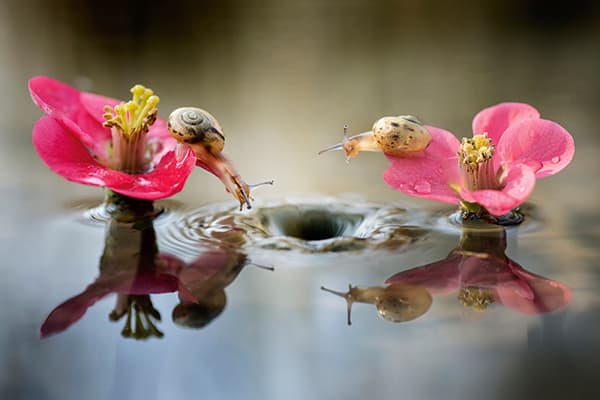
Alberto tries to introduce an element of emotion into his images where possible
‘Taking these close-up pictures of the insects taught me that insects seem to have emotions, so I try to capture this intensity that the human eye doesn’t normally see,’ he explains.
Practice and patience
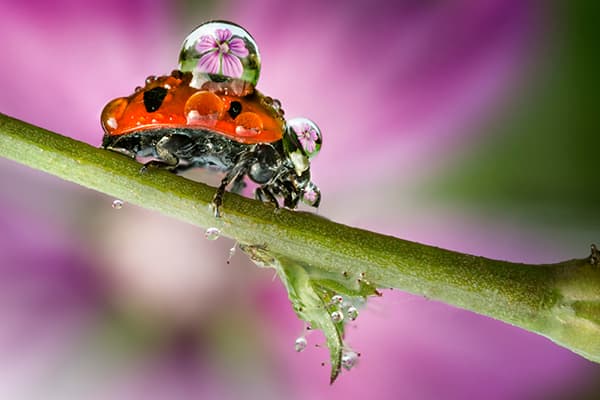
To create a good macro image, you have to be patient and spot-on with your technique
Being able to photograph in this way is not as easy as Alberto’s vast back catalogue suggests. Every image in his portfolio is as striking and as captivating as the next, lulling you into a perception that this is second nature for him.
Alberto says this is far from the case. It has taken him 15 years of tireless work and practice to build up his skills in macro photography. Even now he says it can be a challenge to work out the best light and the particular details that will result in the best images.
A great deal of patience helps in the process, he says, since this will ensure you do not rush into making the wrong decision. Just as important, he explains, is the right kit and a comprehensive understanding of it.
‘To create a good macro image, you have to be patient and very accurate,’ explains Alberto. ‘Therefore, it’s incredibly important that you also have a very good photographic technique and camera set-up.’
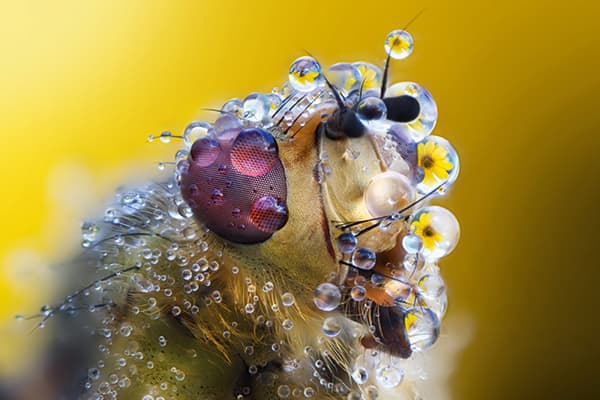
Alberto uses multiple extension tubes to allow really close focusing of his subjects
Alberto mostly shoots with a Nikon D810 and Nikon D7200 that he partners with several different lenses. His favourites among the many are the Nikkor 60mm f/2.8G Micro and Nikkor 200mm f/4 Micro. For a higher reproduction ratio, and to get even closer to his subjects, Alberto will use various extension tubes and bellows, which are placed between the lens and the camera. All this is mounted on either a Manfrotto 055 or 190 tripod, with Alberto using the Manfrotto 405 geared head or 410 head for precise control.
Know your subject

Know your subject: damselflies are best shot straight-on
What Alberto chooses to focus this array of kit on is, as mentioned earlier, hugely varied. The one constant, however, is that to get the best images he must know a lot about his subject and the environment in which it resides. Knowing how to compose an image that displays its most enticing features to best effect helps, too.
‘I know that some insects, such as damselflies, are really nice if photographed straight on,’ he says. ‘These creatures have two big expressive eyes that inspire interest and sympathy in viewers.’
It is possible, of course, to create impact and emotion through how you position your light and how you use colour. Alberto is an expert in both these tricks of the macro trade.
‘I always go out and shoot at the crack of dawn, when the first light is coming up in the morning,’ he reveals. ‘The light is very diffused and perfect to work with as there are no harsh shadows or glare. I almost always use natural light, along with a white diffuser in the lower part of the subject. I never use flashes or strobes, except when I want to freeze the movement of fast-moving subjects, such as water droplets. In this case, I’ll use a flash to freeze the falling drops without having to use a very high ISO.’

Water droplets make the perfect subject
Composition
Composing a macro image is similar to any other form of photography, says Alberto. ‘I think that with this particular style of shooting, you still have to use general photographic rules,’ he explains. ‘So I look for well-balanced images with soft, smooth lights and good colours. With my dew images, I will sometimes move a flower or the subject in the background to obtain the perfect reflection.’

The background of your shot is very important to the success of the final image
This slightly artificial intervention is something Alberto does with his insect subjects, too. He will sometimes move the creature from its original position to somewhere like a flower, enabling him to achieve that blend of smooth light and colour. However, there are limits to the level of intervention he is willing to make: he doesn’t move the insects to a studio or a constructed location, and he won’t move them away from the area of the site in which he found them.
Depth of field
Aside from the difficulties in focusing, another challenge is that there can be issues with shallow depth of field. One way Alberto has overcome this is to use a post-production technique called focus stacking.
‘I use the focus-stacking technique to obtain greater depth of field and ensure every part of the subject is in focus,’ says Alberto. ‘This technique consists of taking several images of the subject at a different point of focus, then using post-production software to put together all the single pictures and build an image with all the subject in focus.’
Alberto is keen to point out that this is the only Photoshop trickery he uses. He doesn’t use any filters or apply too much post-production to his macro images.
‘At the workshops I run, I like to show the raw files to demonstrate that a good macro shot doesn’t need much post-production,’ he says.
Alberto keeps his photos natural, which, considering the subject, is exactly how it should be. He shows the true beauty in the natural world without the need for any gimmicks, filters or heavy editing.
Focusing
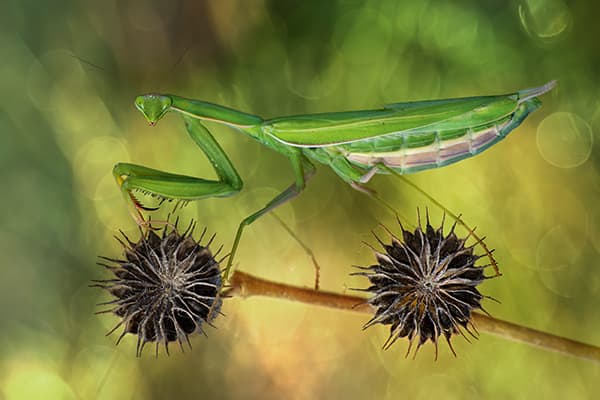
To ensure focusing is perfect, Alberto always chooses manual focus for complete precision
Pin-sharp accuracy is a key quality of macro photography, which is why Alberto only shoots using manual focus.
‘Using a macro lens is the same as a normal lens, but focusing is one of the most difficult things to master,’ explains Alberto. ‘You have to be very accurate because, as everything is magnified, it’s easy to find micro-movements in the images after the shoot. I use live view to avoid mistakes, as I can see everything with greater clarity.’
Focusing can also be a big issue when it comes to shooting moving insects. Alberto has a solution for this, too.
‘I always use manual settings and avoid the AF mode,’ he says. ‘It’s much easier for me to keep the insects in focus using the manual-focus ring, as the camera’s autofocus often focuses in the wrong position when shooting macro pictures.’
Focus stacking in Photoshop
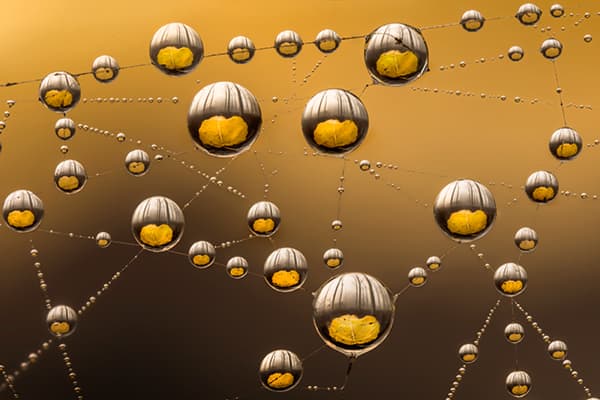
Use your imagination to shoot close-up abstracts
Shooting in extreme close-up will produce a soft bokeh even on a small aperture. This can be an added bonus depending on what it is you are photographing. But there might be times when you would like the whole of your subject to be in focus. Rather cleverly, you can use Photoshop to achieve this. Here Alberto explains how:
- Using manual focus and a tripod, focus on one part of your subject and depress the shutter.
- Carefully shift the focus along a little and take another shot.
- Repeat the above several times until you have lots of frames of the same image, each with slightly different points of focus.
- Using Adobe Bridge, select all the JPEG images you wish to merge together and go to Tools>Photoshop>Load Files Into Photoshop Layers.
- In Photoshop, select all the layers and go to Edit>Auto-Align Layers. Select Auto and press OK.
- Next, go to Edit>Auto-Blend Layers and select Stack Images. Press OK and Photoshop will merge all the areas that
are in focus.
Kit list
Macro lens
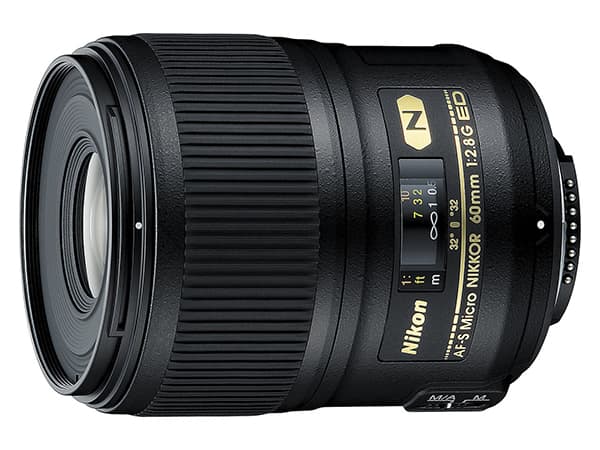
A macro lens is a great starting point, although you may need to add some extension tubes. A longer working distance is better for subjects that are easily disturbed.
Geared head
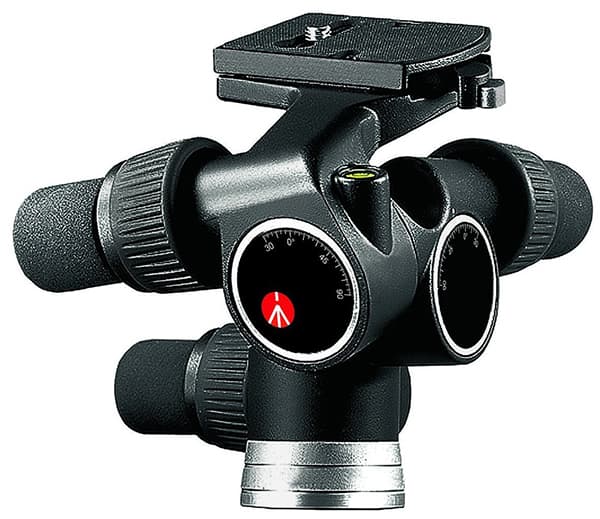
I like to use either a Manfrotto 405 or 410 geared head. They offer very precise control in three directions: pan, tilt and side to side.
Kenko extension tubes
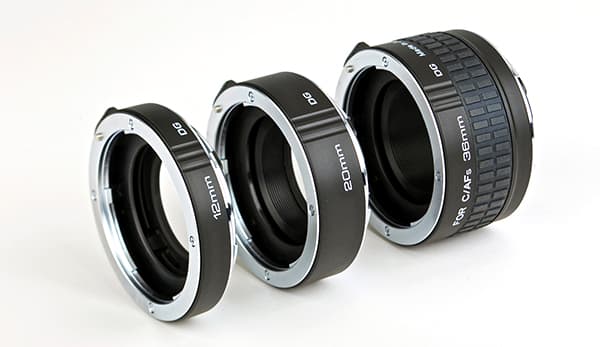
Designed to enable closer focusing with an attached lens, extension tubes allow you to magnify your subject beyond a 1:1 magnification.
Micro adjustment plate
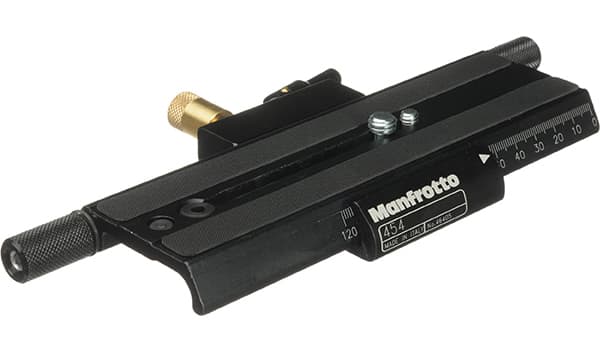
To help with focusing, this plate allows you to move the camera back and forth for pin-point focusing.
Alberto Ghizzi Panizza
Alberto specialises in naturalistic and landscape photography, always looking for the beauty in the world around him. His images are published around the world, and he hosts wide-ranging workshops.

